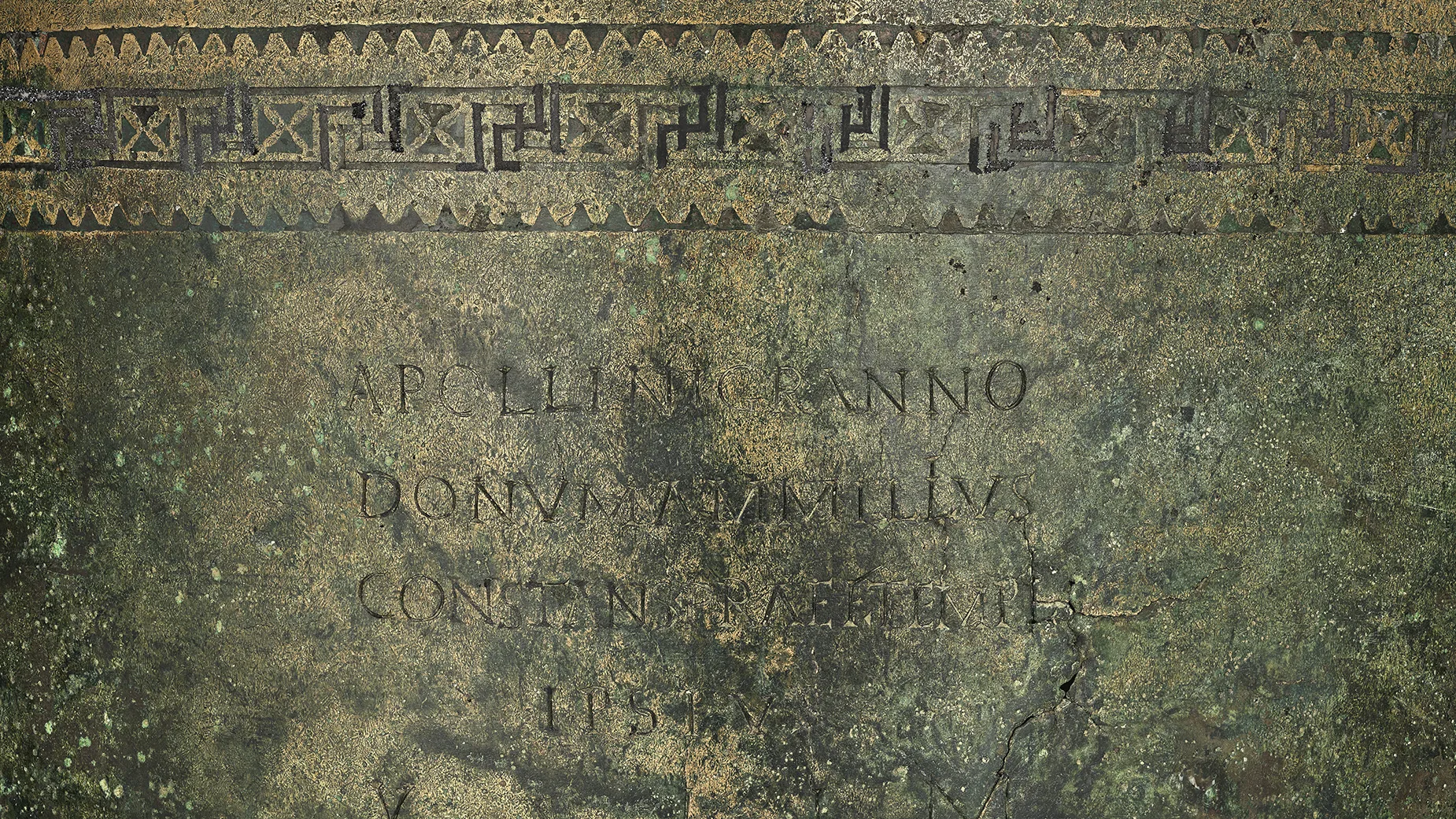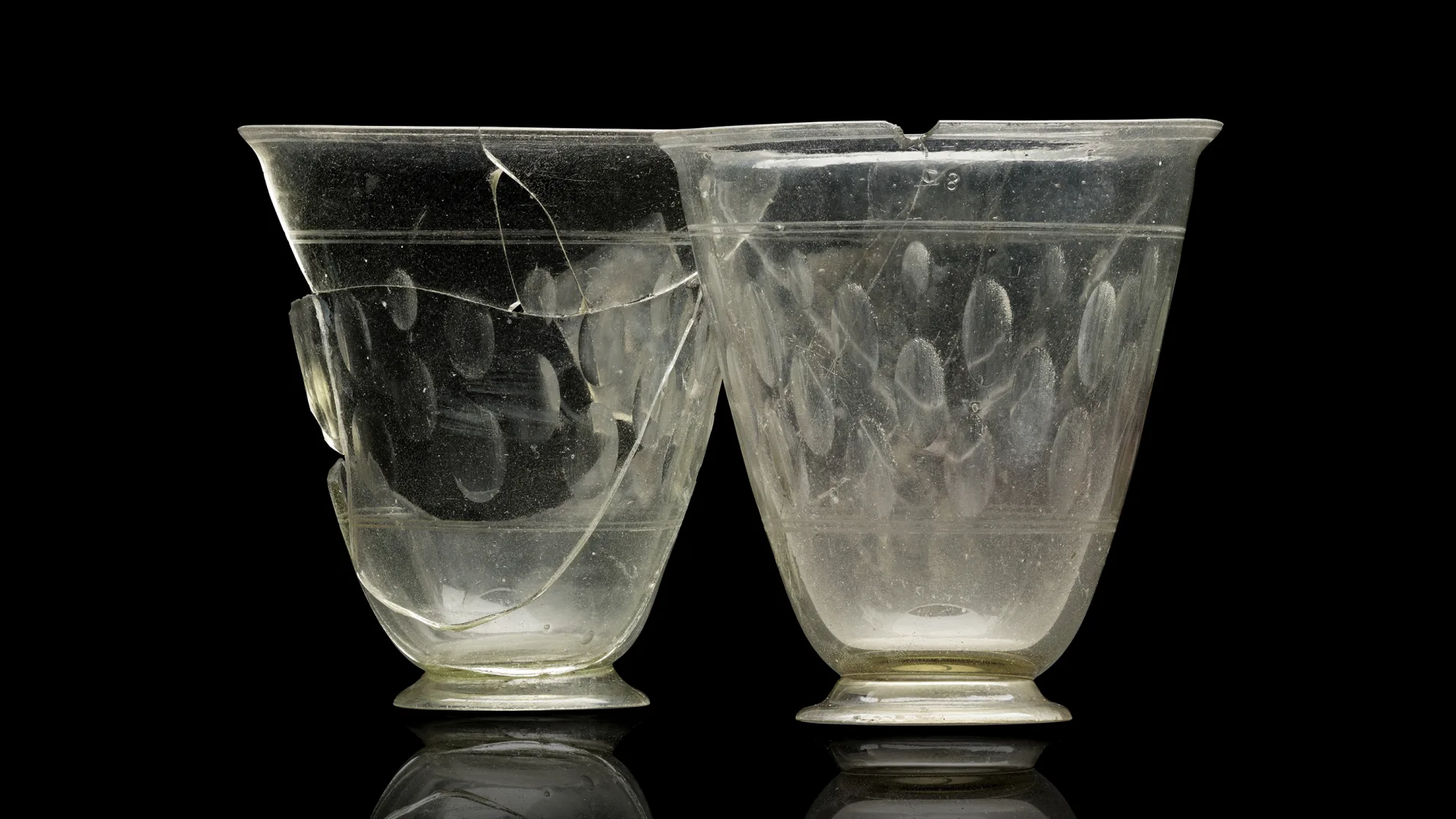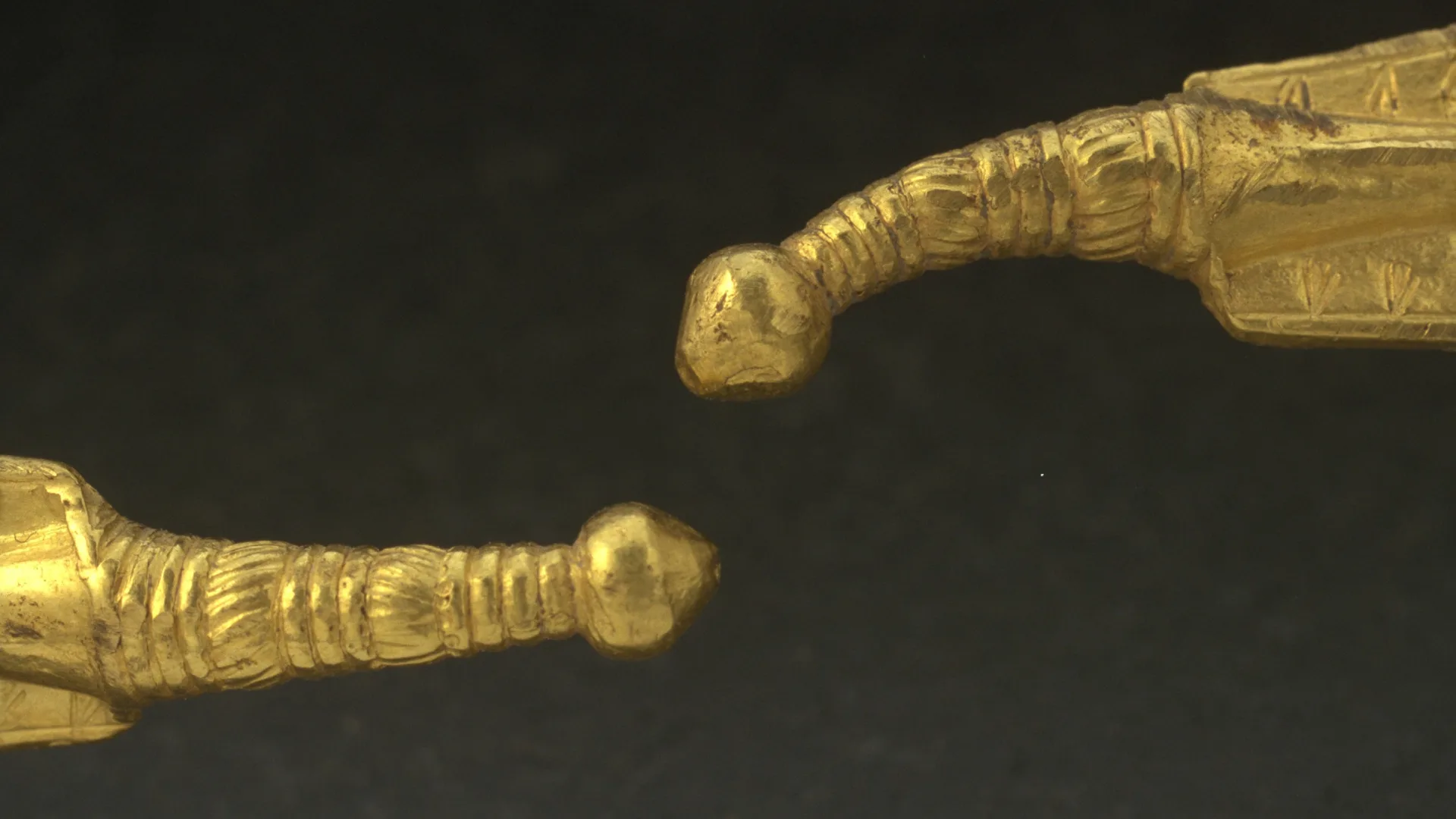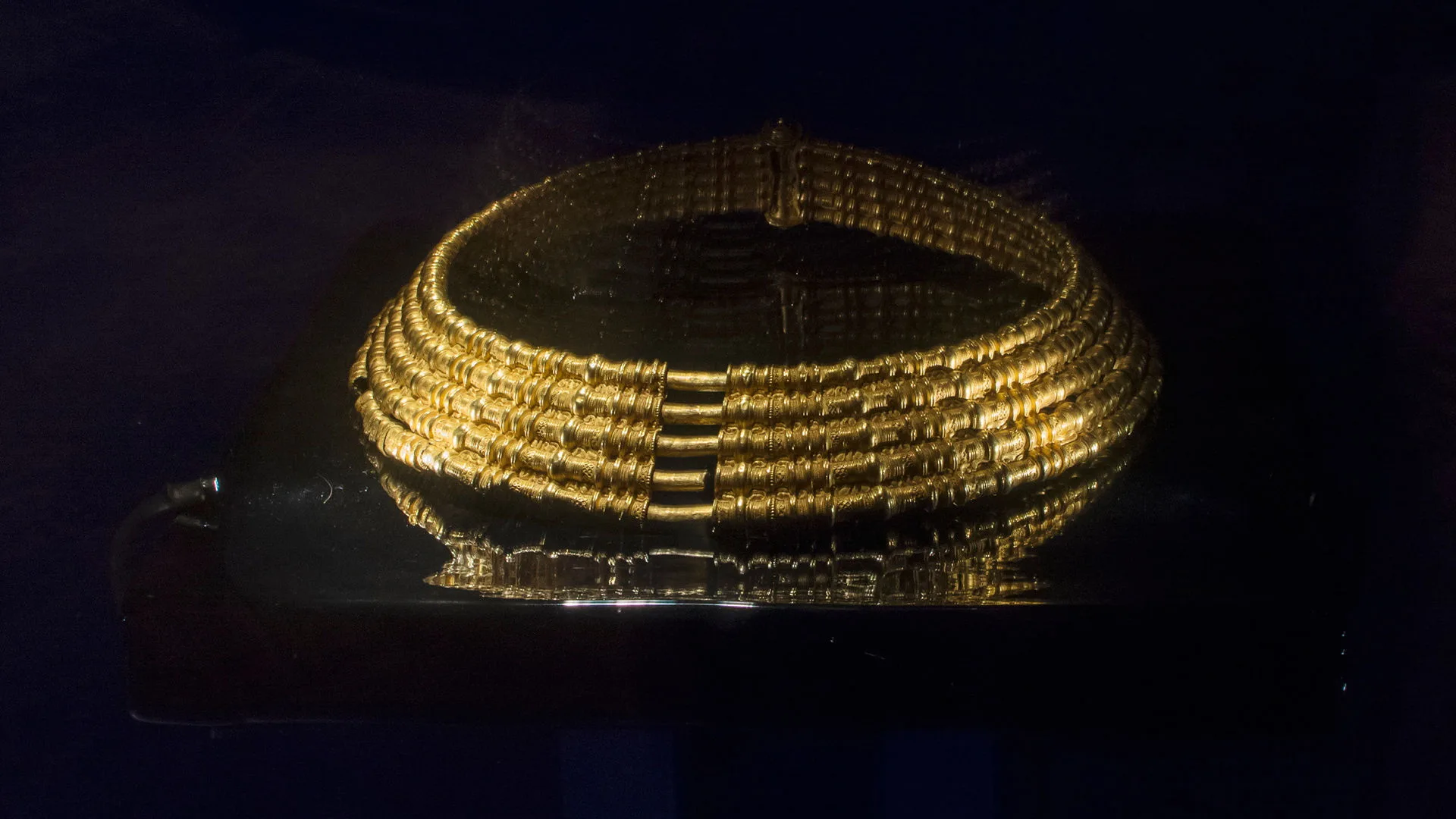The gold of Timrå
Bronze Age
1700 BC – 500 BC
Iron Age
500 BC – AD 1100
Viking Age
AD 800 – AD 1100
During the 5th and 6th centuries, a kind of trading centre emerged in this area, one of central Norrland’s few such places, likely led by a chieftain or petty king. Important goods from this northern inland region included iron, game, elk antlers, and furs.
The warrior’s grave
In Skyttberg, Medelpad, a weapon grave was excavated in 1954. The buried warrior had been wrapped in animal hide and birch bark.
He was buried with a gold finger ring, a sword with a U-shaped chape, two barbed throwing spears with long sockets, and a shield. Bronze brooches had been used to fasten the opening of his woollen tunic.
Decorative tablet-woven bands along the tunic slit had been made using at least 40 tablets and closely resemble ones found in the chieftain’s grave at Snartemo in Norway. A fine ceramic vessel, with black surface treatment and vertical ribbing, also has parallels in Norwegian finds.
The area around the mouth of the Indalsälven River, near modern-day Sundsvall, is extraordinarily rich in finds from AD 200–600, including gold, Roman imports, large burial mounds, and weapon graves. The local elite, men and women alike, most likely gained their wealth through trade in iron and furs.
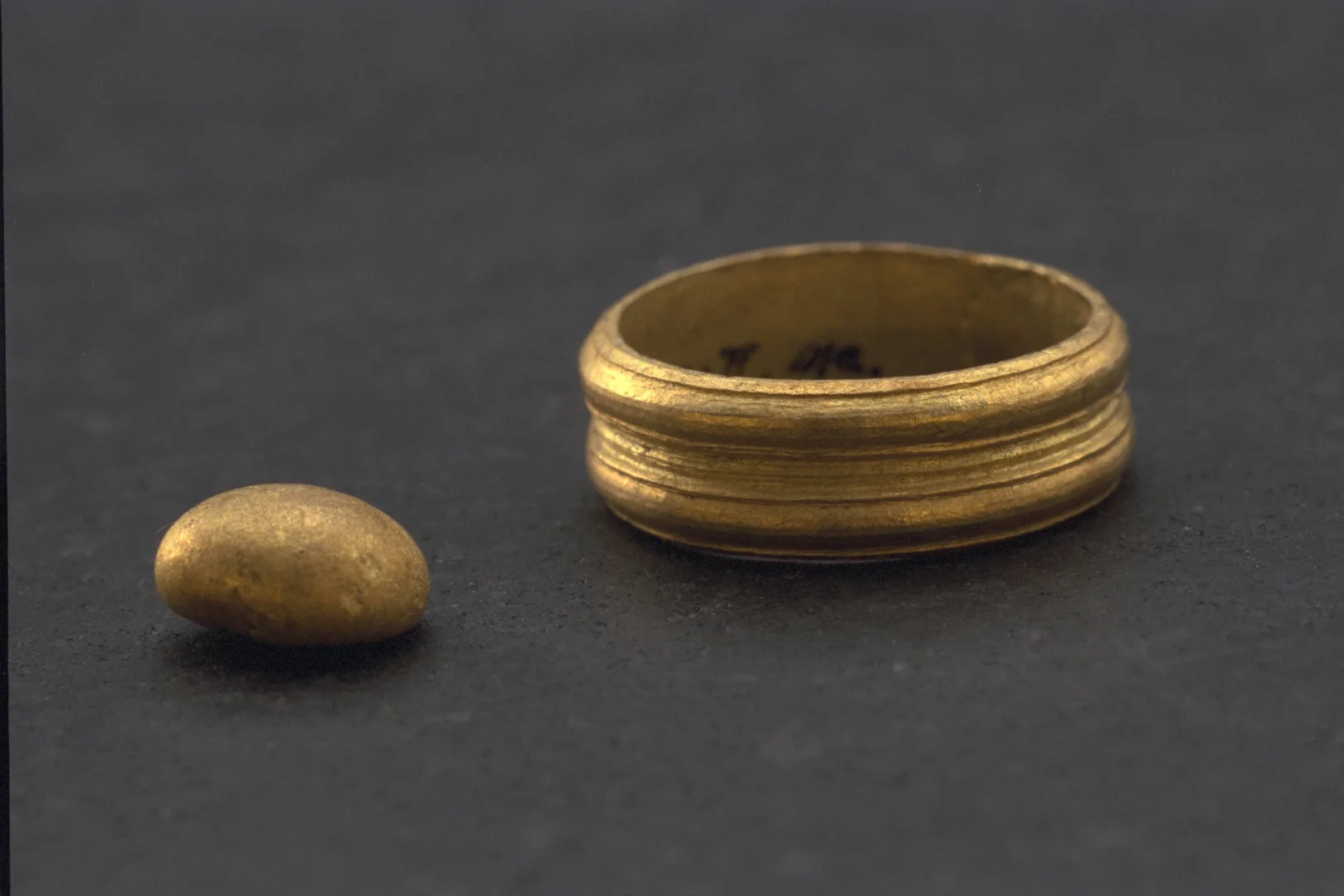
Gold ring and melted gold
On view at Historiska museet in the exhibition Guldrummet
Connections with Gotland
Another object from Timrå is a neck ring, discovered on a stony hillside in 1844. It weighs 75.12 grams and is made of electrum, a natural or man-made alloy of gold and silver.
Its forged terminals and stamped decorations, rosettes, circles, and arcs, are stylistic features also found on neck and arm rings from Gotland. There, Roman silver coins (denarii) were abundant. A Gotlandic farmer or trader may well have acted as an intermediary and exchanged the ring as part of a trade deal.
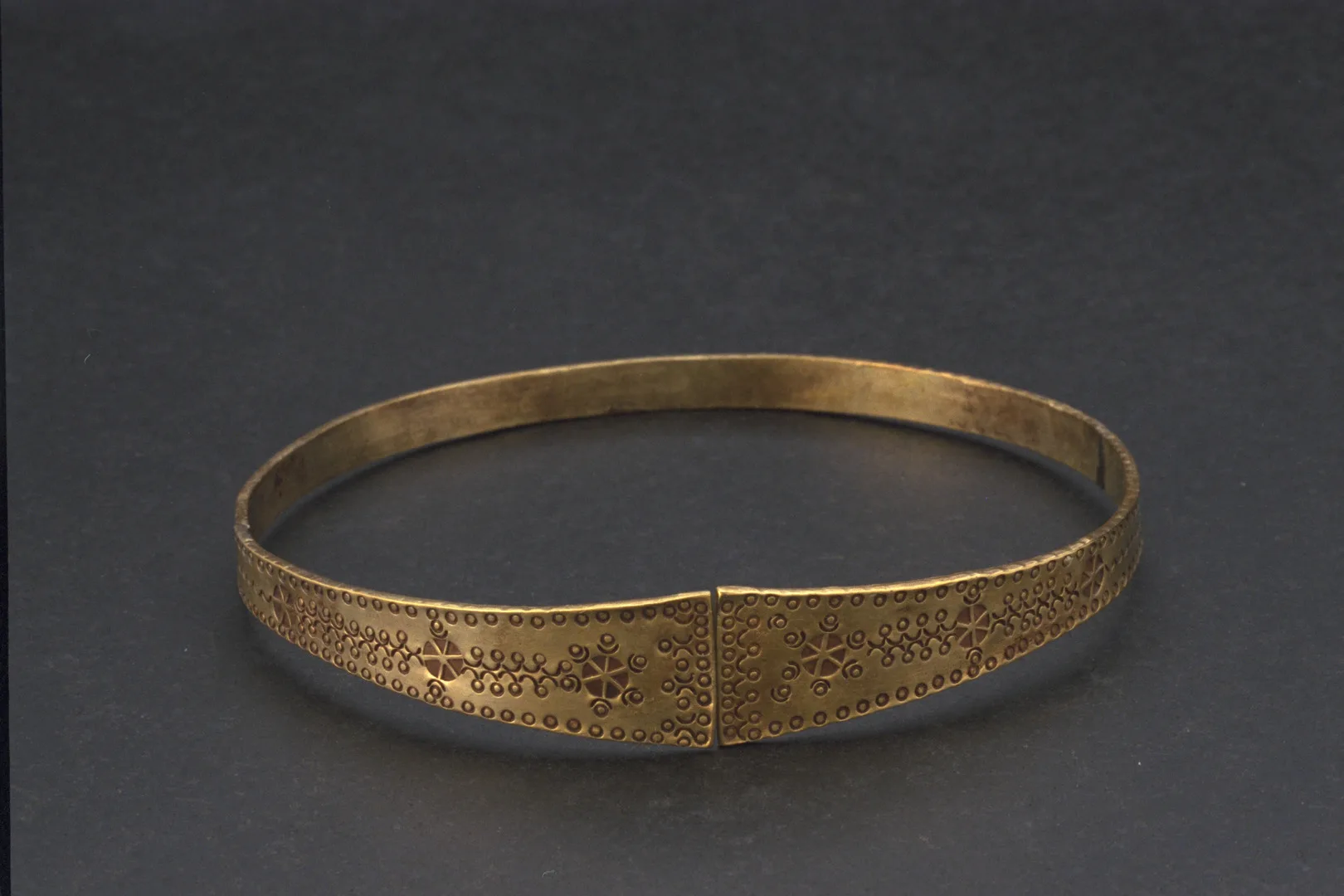
Gold ring
On view at Historiska museet in the exhibition Guldrummet
